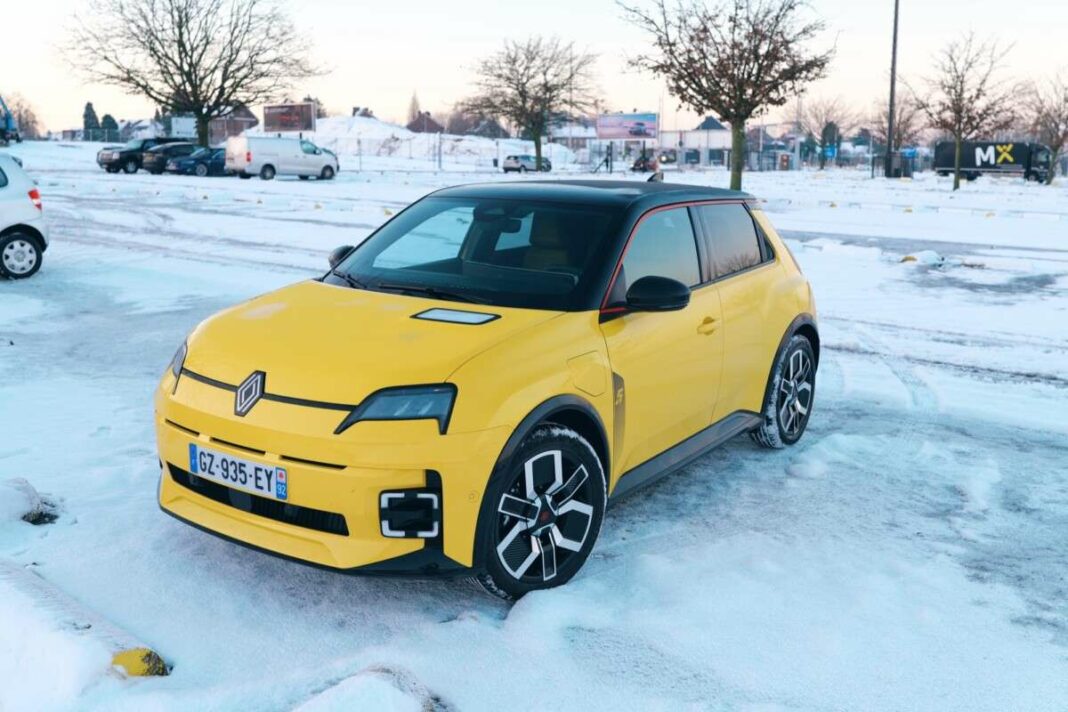A recent test drive of the Renault 5 E-Tech showcases its stylish design and engaging performance. Despite challenging winter conditions, the vehicle impresses with unique features like a battery gauge integrated into the air vent and hidden door handles. The driving dynamics are nimble, although the firm suspension may impact comfort. Interior elements prioritize user-friendliness with practical physical buttons and a sophisticated ambiance, making the R5 a notable contender in its class, albeit with a modest range compared to competitors.
Experiencing the Renault 5 E-Tech: A Stylish Ride
Some car tests leave a lasting impression, and my recent adventure with the Xpeng G6 was no exception. I had the unique chance to trade my Tesla Model Y for the freshly launched Renault 5 E-Tech, experiencing this new vehicle for a full 24 hours. This road trip took me from Paris to Brussels during winter, a true test for a car that has been crowned “Car of The Year 2025.”
The journey wasn’t just a stroll; it involved challenging conditions including 0-degree temperatures and snowfall in Belgium—all while I used summer tires, which added an extra layer of excitement to the experience.
Design and Performance of the Renault 5 E-Tech
As someone who hasn’t experienced the original R5, I approached this modern iteration without any nostalgia. While the classic model was iconic, it wasn’t known for comfort or high performance. In contrast, the new R5 is visually striking! Coming from the minimalist aesthetic of Tesla, the Renault’s playful design elements are refreshing. For instance, the headlights greet you as you approach, a charming touch that makes a strong first impression.
The attention to detail is commendable. The air vent has been ingeniously transformed into a battery gauge, where each bar represents 20% charge—an integration of functionality and design that stands out. Hidden rear door handles are another clever feature. Overall, the charge indicator embedded in the hood is not merely decorative; it seamlessly fits into the car’s design ethos, while the wheels subtly hint at some of Renault’s historical models.
Renault’s color choices are equally impressive, blending classic shades with modern hues. Our test car’s vibrant “Pop” yellow turned heads and highlighted its stylish lines beautifully.
Measuring 3.9 meters, the R5 maintains a compact yet well-proportioned presence on the road, ensuring it catches the eye without being overly flashy. Performance-wise, during my highway drive at 130 km/h in cold weather, the R5 averaged between 23 and 24 kWh/100 km. Lowering speed to 120 km/h improved efficiency to around 21 kWh/100 km. While this is thirstier than a Tesla, the standard heat pump effectively keeps the cabin warm without severely impacting range.
In winter conditions, expect a real-world range of about 200 km at 130 km/h, which is reasonable for its class but still lags behind Tesla’s impressive figures. Charging capabilities are decent too, with the R5 supporting up to 100 kW in fast DC charging. The charging curve is designed for consistency rather than rapid peaks, allowing for an 80% charge in roughly 30 minutes—suitable for a vehicle that will primarily be charged at home.
Driving Experience and Interior Features
The true revelation lies in the driving dynamics. The R5’s 2.54-meter wheelbase makes for a surprisingly nimble and engaging driving experience. The steering, especially in sport mode, provides a more invigorating feel compared to my Tesla. The braking system is sharp and efficient, blending friction and regeneration well, although it might be a tad too aggressive for some drivers.
However, the ride comfort does have room for improvement; the suspension is quite firm, making road imperfections noticeable. This firmness contributes to a go-kart-like feel, particularly in urban settings where its 10.3-meter turning radius shines—performing U-turns is a breeze compared to the Tesla.
Shifting to driving aids, the R5 offers a traditional setup with three buttons and a dial, diverging from Tesla’s more streamlined approach. Initially, I found it a bit complex, but it proved intuitive in practice. The adaptive cruise control and lane-keeping assist function smoothly, although the absence of an automatic lane change feature is noted. Nonetheless, the system manages deceleration gently, which is a welcome aspect for a city car.
The automatic parking assist functions well but requires manual acceleration control throughout the maneuver, a surprising choice coming from the fully automated Tesla experience. While parallel parking is quick and efficient, the need to manage speed detracts slightly from the overall fluidity of the experience.
Upon entering the R5, I was surprised by the high floor, which offers a slightly elevated driving position reminiscent of an SUV, albeit with a low windshield that can feel confining. The thicker pillars limit natural light, particularly without a glass roof option, although Renault has incorporated an RGB light signature in the dashboard to brighten the atmosphere. Initially viewed as gimmicky, this feature enhances the interior ambiance, especially at night.
The interface is user-friendly, adapting to changes in ambient lighting with a cohesive design aesthetic that adds a touch of sophistication. The inclusion of backlit USB-C ports is a thoughtful detail, making it easier to connect devices in low light conditions.
In contrast to Tesla’s minimalist interior, the R5 embraces a more tactile approach with physical buttons, providing practicality and ease of access. The dashboard is flat and well-structured, and the choice of soft-touch materials enhances comfort, setting it apart from the typical hard plastics in this category. These thoughtful design choices contribute to a positive experience within the cabin, even if the overall feel could be refined further.
